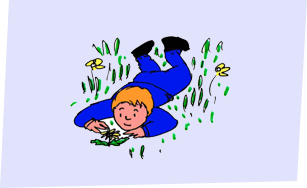Geography

Our Geography Curriculum Intent:
Our children will develop their knowledge and skills through curriculum planning based on the requirements of the National Curriculum for Geography. Planning is carefully designed to be coherent and accessible, to enable children to make clear links with, and build on, prior learning and life experiences. We aim for our children to gain a good mental picture of the world around them.
They develop knowledge and understanding of cultures, environments and places. They begin to develop an understanding of the impact people have on our local environment and the wider world.
Language development
learning behaviours
We aim to actively foster our children’s intrinsic interest in, and enthusiasm for, Geography. We understand that children love talking about the places they have visited, or originated from. They have an excitement about sharing their own personal journeys. We recognise that this engagement fosters positive learning behaviours.
We will actively promote positive learning behaviours through including our animal mascots in medium term planning.
We know that the children like having the opportunity to share and collaborate: exploring a globe, atlas or local map; identifying countries or places that they know; or drawing a map or journey together.
physical activity
The children are active learners in geography; they explore their local environment, they manipulate globes and maps and materials, they observe and collect data on field trips. They draw and they make maps on large and small scales using a variety of materials such as play dough.
We aim to foster practical engagement throughout the curriculum, because we know this enables our children to make good mental geographical pictures, in order to remember what they’ve learnt.
cultural capital
creative curriculum design and progression
If you were to walk into a Geography lesson at Garden Suburb Infant School, you would see:
- All children engaged and enthusiastic to gain geographical knowledge.
- Children who can work independently, and are also consistently co-operative and kind; they take turns, discuss their learning and share their ‘wondering’.
- Children using subject specific vocabulary, appropriate to their age and stage of development, with understanding and confidence, to talk about different aspects of their work
- A sharp focus on reading embedded in lessons.
- Teachers demonstrating secure subject knowledge, teaching lessons which are explicitly adapted to be both ambitious and to meet the needs of pupils with Special Educational Needs.
- Teachers and support staff presenting information clearly, and encouraging appropriate discussion to learn key concepts.
- Teachers and support staff helping children embed and use knowledge, not just memorise disconnected facts.
- A powerful learning environment, including displays which reflect their learning.
Click on the document at the bottom of the page, to see how our Curriculm Intent in Geography relates to our whole school Curriculum Intent.
outcomes - learning about our place in the world
In Geography, the children have been developing their understanding of the world around them and their place knowledge, building on and making connections with the places/countries they are already familiar with.
Our curriculum deliberately moves from the large scale of the world, to the smaller scale of the local areas around them, and back again:
- The children begin to recognise the shapes and sizes of the continents and oceans, to help locate and label these on a world map.
- They learn to identify the hot and cold areas, the desert/equator/polar climate zones, on their world map.
- They recognise features of these zones (animals, flora/fauna, climate e.g. snow, landmarks, topography e.g. desert) from sources (photos, descriptions).
- They then learn to locate the UK on a world map/globe and make links with climate and world position to describe the UK climate
- They learn to describe the difference between climate and weather.
TAKE A LOOK AT OUR PICTURE GALLERY to see some examples of the outcomes of the units of work carried out in KS1 in the summer term. You can see the world maps the children have drawn, both collaboratively and independently, and the work around the features of the different climate zones. The children have also drawn some more, very local maps (of our school playground!), using symbols and thinking about direction. In Year 2, the children then thought back to their experience of the wider world; for their homework they prepared a presentation of a significant world landmark, that they knew about or had visited.
Bringing the school year to a glorious finale, we celebrated the wonderful diversity of our school community at our International Food Fair, experiencing the tastes, aromas and colours of different foods from all around the world. YOU CAN SEE SOME PICTURES HERE.


